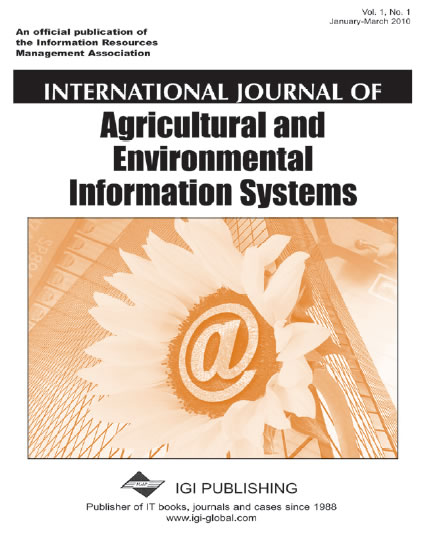ANALYSING, MODELLING AND VISUALIZING SPATIAL ENVIRONMENTAL DATA
International Journal of Agricultural and Environmental Information Systems (IJAEIS)
Special Issue On: Analysing, Modelling and Visualizing Spatial Environmental Data
Guest Editors:
Beniamino Murgante, University of Basilicata, Italy
Mikhail Kanevski, University of Lausanne, Switzerland
Antonino Marvuglia, University College Cork, Ireland
Maurizio Cellura, University of Palermo, Italy
Introduction and Objectives of The Special Issue:
In recent times the growing awareness among environmental disciplines about the importance to include spatial aspects in data analysis has led to the development and the consequent application of new methodologies for automatic processing of environmental data at mapping and classification purposes.
It is well known that the level of uncertainty in data analysis increases considerably when analyzing environmental data, due to natural systems’ complexity. In the most of the cases environmental data manifolds are noisy and nonlinear and the relations among the involved variables are often not very clear.
Large databases and long periods of environmental observation, monitoring of pollution, rare and extreme events and recent remote sensing technologies entail the use of new analytical and processing tools.
Observation only provides the necessary data sets, but a correct interpretation of the monitored phenomena requires a process of knowledge extraction from data aimed to the detection of spatial patterns and underlying relations among the measured variables. This is possible only through a careful data mining process.
New approaches can be provided, only to cite some examples, by Machine Learning (ML), which is a general and powerful field in data processing and modelling, and by Exploratory Data Analysis (EDA), which is an approach to discover underlying features contained in data. This volume will provide a good sample of the cutting-edge data analysis and modelling tools, by presenting concepts, algorithms, and real case studies from spatial environmental problems, natural hazards, natural and renewable resources, socio-economic data and other fields of application. It consists of a series of researches on spatial environmental data analysis, treatment and visualization using intelligent modelling techniques, for an environmental automatic decision-oriented treatment of data.
Contents:
Volume 3, Issue 1, January 2012
- A generalization of the Orthogonal Regression technique for Life Cycle Inventory”, Antonino Marvuglia, Maurizio Cellura, Marcello Pucci
- “Biomass for power generation: A case study using Geographical Information Systems”, Antonio Messineo, Domenico Panno, Marco Beccali, Roberto Volpe
- “Geographical Information Systems for biomass estimate and the search for renewable energy sources”, Giuseppe Borruso
- “A Strategy for Estimating Nutrient Concentrations using Remote Sensing Datasets and Hydrological Modeling”, Vladimir J. Alarcon, William McAnally
- “Use of remote sensing data for Landslide change detection: large Montescaglioso landslide (Basilicata, Southern Italy)”, Stefania Pascale, Vittoria Pastore* Francesco Sdao, Aurelia Sole, Dimitri Roubis, Pietro Lorenzo
Volume 3, Issue 2, July 2012
- “A remote sensing based calibration framework for the MOLAND urban growth model of Dublin”, Tim Van de Voorde, Johannes van der Kwast, Frank Canters, Guy Engelen, Marc Binard, Yves Cornet, Inge Uljee, Carlo Lavalle
- “A Linguistic Approach to Model Urban Growth”, Lefteris Mantelas, Poulicos Prastacos, Thomas Hatzichristos, Kostis Koutsopoulos
- “Forecasting high correlation transition of agricultural landscapes into urban areas. Diachronic case study in north eastern Italy”, Federico Martellozzo
- “Service Path Attribution Networks (SPANs): A Network Flow Approach to Ecosystem Service Assessment”, Gary W. Johnson, Kenneth J. Bagstad, Robert R. Snapp, and Ferdinando Villa
- “The Evidence of Links Between Landscape and Economy in a Rural Park”, Paola Perchinunno, Francesco Rotondo, and Carmelo Maria Torre
